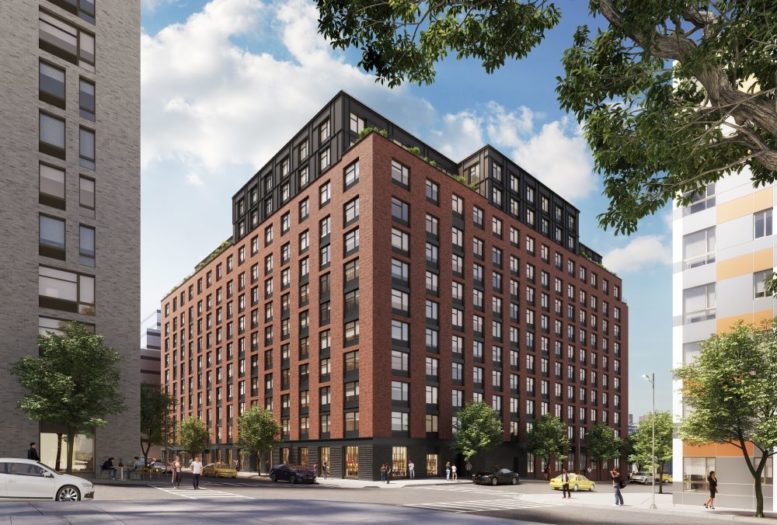All New Yorkers 11 and older can now vote on how to spend $5 million of “The People’s Money”
New York City Civic Engagement Commission (CEC) Chair and Executive Director Dr. Sarah Sayeed today announced the launch of “The People’s Money” voting phase. “The People’s Money” is New York City’s first-ever citywide participatory budgeting process. Until June 25th, all New York City residents ages 11 and older, regardless of immigration status, will be able to vote on how to spend $5 million of mayoral expense funding to address community needs.
New Yorkers living in any one of the five boroughs will be able to vote on a ballot for their borough, while those living in one of 33 equity neighborhoods will also be able to vote on a ballot for their neighborhood. Residents can vote online by inputting their zip codes. Paper ballots will also be available citywide at sites listed here. After June 25th, ballots will be tabulated, winning projects will be announced, and then be implemented starting in 2024.
The CEC will be co-hosting five flagship events, one in each borough featuring The People’s Bus, a retired Department of Corrections vehicle transformed into a mobile community center, where residents will also be able to vote. The events are:
- Bronx Week Culture Festival: Grand Concourse (from 168 to 161) – May 21st
- Queens Night Market: Flushing Meadows Park – June 3rd
- Family & Fatherhood Fun Day: Clove Lakes Park – June 10th
- Museum Mile Festival: Museum of the City of New York – June 13th
- BRIC Celebrate Brooklyn! Festival: Prospect Park Bandshell – June 15th
“As we work towards a more equitable city, the launch of 'The People's Money' represents a significant step towards inclusiveness," said New York City Mayor Eric Adams. "By allowing all New York City residents to vote on how to spend $5 million of mayoral expense funding, we are empowering communities to have a direct say in addressing their needs. I encourage all eligible residents to participate in this historic participatory budgeting process and help shape the future of our great city.”
“The city budget is, in fact, the people’s money. This year, for the first time ever, New Yorkers across the city have the opportunity to weigh in directly and specifically on how your money is spent,” said NYC Chief Engagement Officer Betsy MacLean. “Big ups to the Civic Engagement Commission — leading the direct democracy charge in our city with an abiding emphasis on equity, inclusion, creativity, and joy. Please join us in this transformative effort and vote! Together we can send a powerful message that New Yorkers want, need, and love participatory budgeting!”
“Throughout The People’s Money process, the CEC has been focused on manifesting community power and meeting New Yorkers where they are at. During this voting phase we will continue our robust efforts to engage equitably with residents across the five boroughs,” said Dr. Sarah Sayeed, Chair and Executive Director, NYC Civic Engagement Commission. “Participatory budgeting is a pathway into civic engagement that enables communities to move their voice into action on decisions that impact their lives.”
On September 14th, 2022, Mayor Adams and the CEC announced the launch of The People’s Money. From September through November of 2022, the CEC invited New Yorkers to virtual and in-person workshops to learn about the city budget cycle, identify community needs, and brainstorm ideas for expense projects through interactive activities and discussion. Residents were also able to propose ideas and projects online directly on this platform. Prior to launching, the CEC led a robust engagement process to solicit proposals from community-based organizations and other groups to host Idea Generations Sessions across the five boroughs. The CEC received 220 applications and selected 82 partners.
The CEC and 82 partners facilitated 523 Idea Generation sessions across the city through which we engaged 12,344 New Yorkers. In addition to sessions facilitated by partner organizations, the CEC also collaborated with the offices of Borough Presidents to host five borough-based Idea Generation Sessions. New Yorkers submitted 2,023 ideas for our boroughs and 2,116 ideas for our equity neighborhoods.
From December 2022 through February 2023, randomly selected resident committees evaluated submitted ideas against equity and feasibility criteria and developed and selected the final project proposals to be placed on the ballots.
Throughout the month of March, the CEC held 13 strategy sessions open to the public to elicit input on how to perform ‘Get Out the Vote’ outreach most effectively. 33 contracted organizational partners will engage in targeted outreach in Equity Neighborhoods to ensure an inclusive and equitable process.
“Citywide participatory budgeting will give New Yorkers a voice on how our city spends public dollars for their community,” said New York City Comptroller Brad Lander. “As one of the first city council members to kick-off participatory budgeting in my district, I have witnessed firsthand how a community-driven budgeting process can empower our neighbors. I’m extremely excited it is being implemented citywide and cannot wait to see what policies and programs New Yorkers choose to prioritize across the five boroughs.”
The People’s Money Background:
In November 2018, one million New Yorkers voted and approved three ballot initiatives proposed by the 2018 Charter Revision Commission. This established the NYC CEC and included a mandate for the CEC to implement a citywide participatory budgeting (PB) process. Prior to receiving funding to run a citywide program, the CEC ran two localized PB processes, beginning with “It’s Our Money” in 2019 and “The People’s Money” in 2021:
- “It’s Our Money,” (2019) funded five $20,000 youth-focused projects and engaged over 3,000 young people citywide. This process was designed by youth, for youth, with the goal of empowering young people to voice their priorities and needs to determine which project ideas should be funded. Youth organizations were invited to submit project proposals that targeted young people’s specific needs and interests.
- In 2021, the CEC launched “The People’s Money,” a $1.3 million PB process in the 33 neighborhoods hardest hit by COVID-19, as part of the Taskforce for Racial Inclusion and Equity (TRIE) Neighborhood Initiative and in partnership with YMI (the Young Men’s Initiative). Residents decided how to spend over $40,000 in expense funding in programs & services for their neighborhood.
Traditionally, participatory budgeting in New York City has only been accessible to residents whose council members have opted to run a process in their district, primarily through discretionary capital funding for projects that can take years to materialize. However, a process utilizing expense funding provides residents with the flexibility to submit creative ideas that may include projects, services, or events, and to see the projects that receive the majority vote implemented within the following year.
All projects for this cycle must be completed by June of 2024. The CEC will report back the results of the projects upon completion, including metrics such as the number of residents served, outcomes, highlights, successes, and challenges.
Implementation of citywide PB strengthens and expands what is currently the largest PB process in the nation, while deepening civic trust and engaging communities in a process grounded in the principle of collective determination. Citywide PB will showcase a new and unique collaboration between City Hall and its agencies, Borough Presidents, City Council, community boards, CBOs, New Yorkers, and particularly those who have been historically underrepresented.
EDITOR' NOTE:
It is the opinion of this the editor of this blog that an elected official should know the problems of what area they represent and where money needs to be allocated, or they should not be in office.








